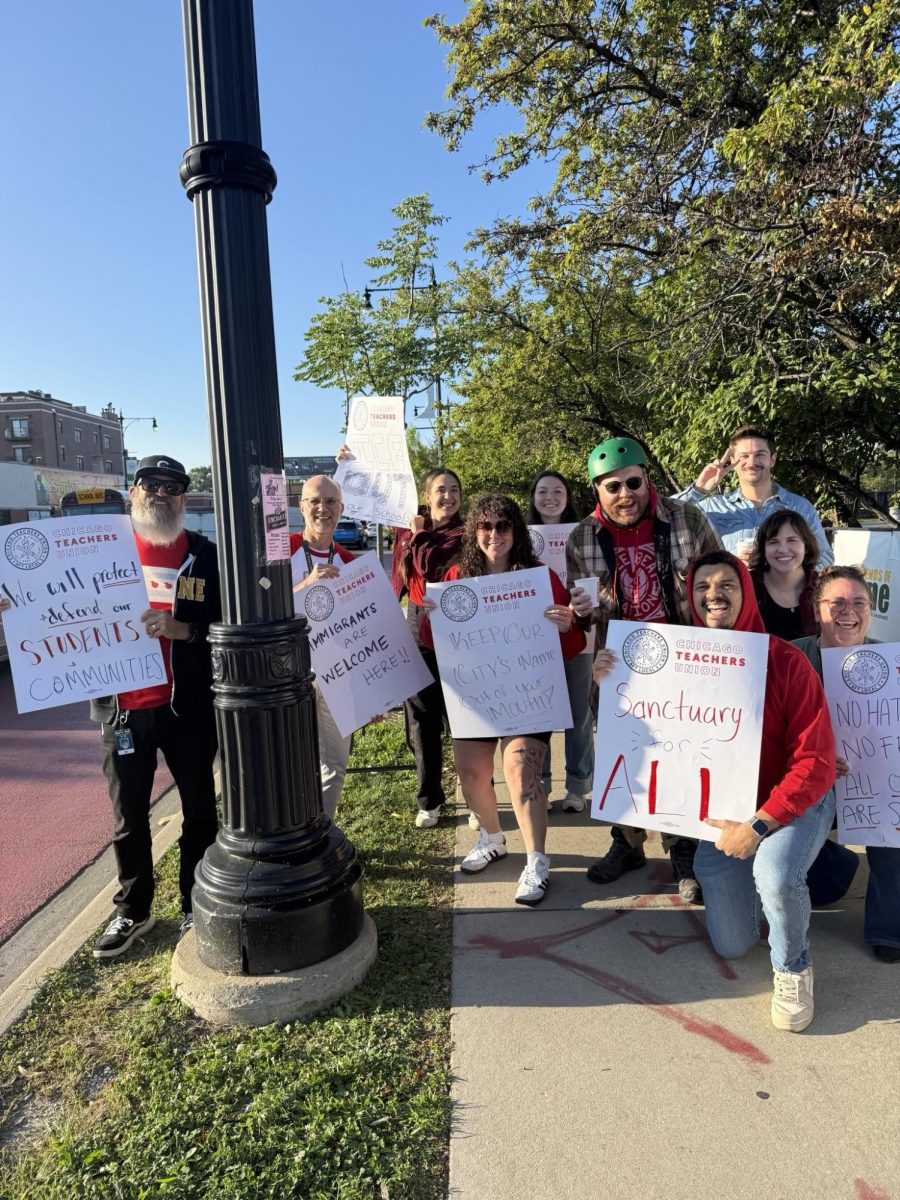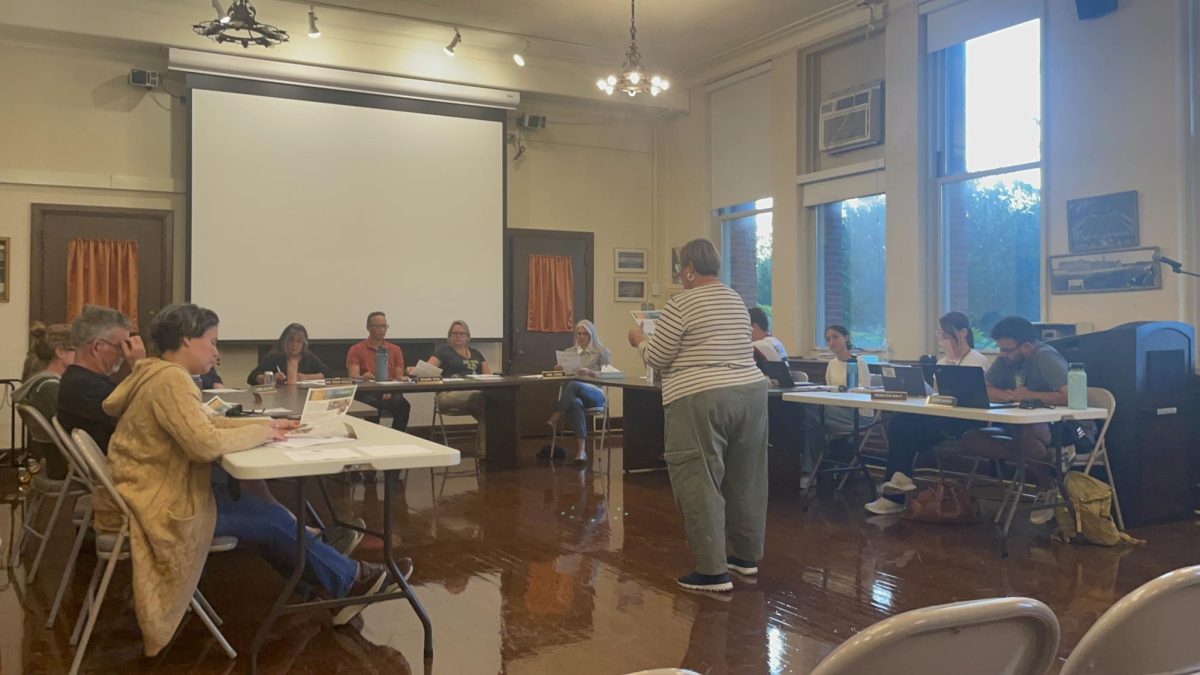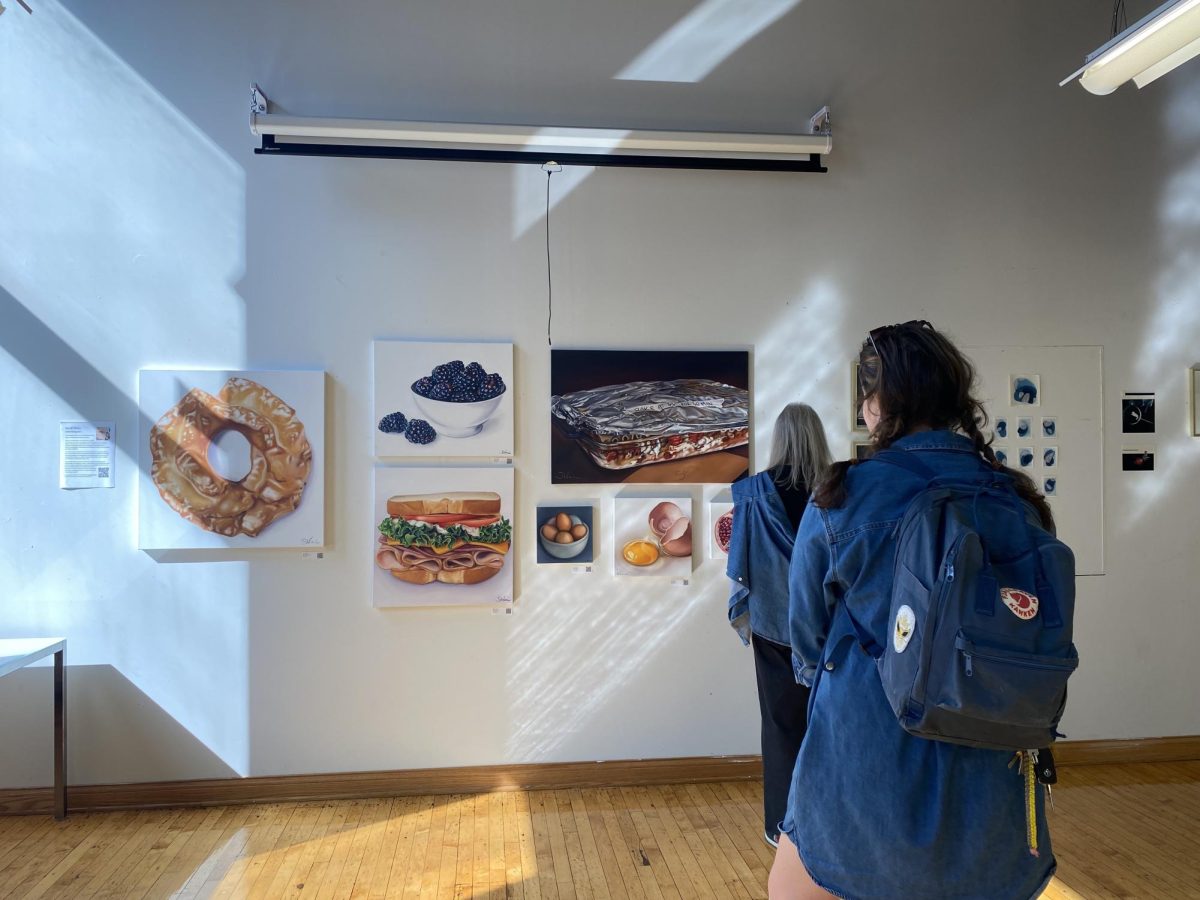By Sophia Swenson
“CQ CQ CQ, this is W9WKR, Whiskey Niner Whiskey Kilo Romeo, Lane Tech High School Chicago Illinois calling CQ and listening for any call.”
Up stairwell J on the fourth floor, a door stands just to the right of where the stairs end and the band room begins. Unnoticed or ignored by most students, the door leads to a room that used to house Lane’s own Ham radio station, W9WKR. Before cell phones or the internet, Lane had its own social connection to the outside world, which was used and kept up by members of the Radio Club, or “Hammies.”
“Ham radio is a hobby. It’s the only international hobby in the world except stamp collecting,” said Barry Nelson, class of 1962, and member of the 1960 and ‘61 Lane Tech Radio Club.
Ham radios are not like the radio stations you listen to in your car. A person who wants to use a Ham radio studies for a licensing exam, given by the Federal Communications Commission. Once a Ham radio license is earned, the person who passed the exam is allowed to contact other Ham radio users all over the world, either through Morse code or by speaking into a microphone.
Ham radios don’t have to be used simply for social reasons. If there is especially bad weather, or if power lines and cell phone towers do not work, Ham Radio users are still able to make contact with each other, and get help if needed.
Starting in 1910, Lane Tech’s “Wireless Club” (as it is listed in the 1910 yearbook) allowed members who were interested in wireless technology to convene and have discussions about the latest gadgets. By 1937, the Radio Club began to piece together an actual Ham Radio, which they were able to use by 1939. Licensed members were allowed to communicate via Lane’s call number, W9WKR, and gain access to other Ham Radio users from all over the world through antennas on the building’s roof. “Hammies” would then have short conversations with a “Hammie” on the other end of the receiver regarding any topic other than religion, politics or sex (a rule that all Ham Radio users have to abide by).
Nelson still uses his Ham Radio today, and remembers that Radio Club members were given the opportunity to study for their licensing exam under the instruction of students who had already received their license. None of the licensing exams were easy, and Nelson estimates that only half of the boys who took the exam actually passed. In fact, it is unknown whether any of the teachers who sponsored the club had a Radio License of any kind.
Radio Club members were separated into three different categories based on their level of experience: Beginners, Intermediates, and Advanced Hams. Although the requirements have changed, beginner licensing tests required a hopeful Hammie to tap out 13 words per minute of Morse code.
“It’s not like studying for a driving license, it’s a whole different ball game,” said Nelson. “You got to send and receive Morse code…It’s like learning German, or Spanish or French, like a whole different language.”
During the school day, Radio Club members would take a hall pass to the “Ham Shack” and use the radio until their next class began. The Radio Club room was not always in the tower by the fourth floor band room. At one point it was housed in a third floor classroom. Nelson remembers stealing hall passes from his Radio Club sponsor’s desk. He then had some friends who worked with the school’s printing presses forge the sponsor’s signature onto that stack of passes, enabling Nelson to go to the Ham Shack anytime he pleased.
“You could sit there all alone with all those radios,” said Nelson. “You were free to operate any time you wanted.”
Just like those who text “LOL” or “JK”, Ham Radio users have their own language as well.
‘CQ’ or ‘seek you’ is a general call used even today. It means ‘I am available to talk with any other ham anywhere in the world.’
“And you thought your generation had us beat with your LOL and BTW and many others. When you send Morse code you learn to use standard abbreviations like CUL, see you later, and BCNU, be seeing you, and many more,” said Nelson, who ends his conversations with a “73” which means “best regards.”
By the mid 1970s, Lane’s Radio Club became less and less popular, finally ending in 1974. Without the Radio Club, Lane’s previous call numbers W9WKR were made available for any Ham Radio user to adopt. Luckily, the historic call letters were kept within the Lane family after Barry C. Cook, a Lane Alumni, jumped at the chance to use them with his own Ham radio.
Although Lane’s antennas are no longer live with conversations between Hammies from around the world, historic call sign is far from dying out.




